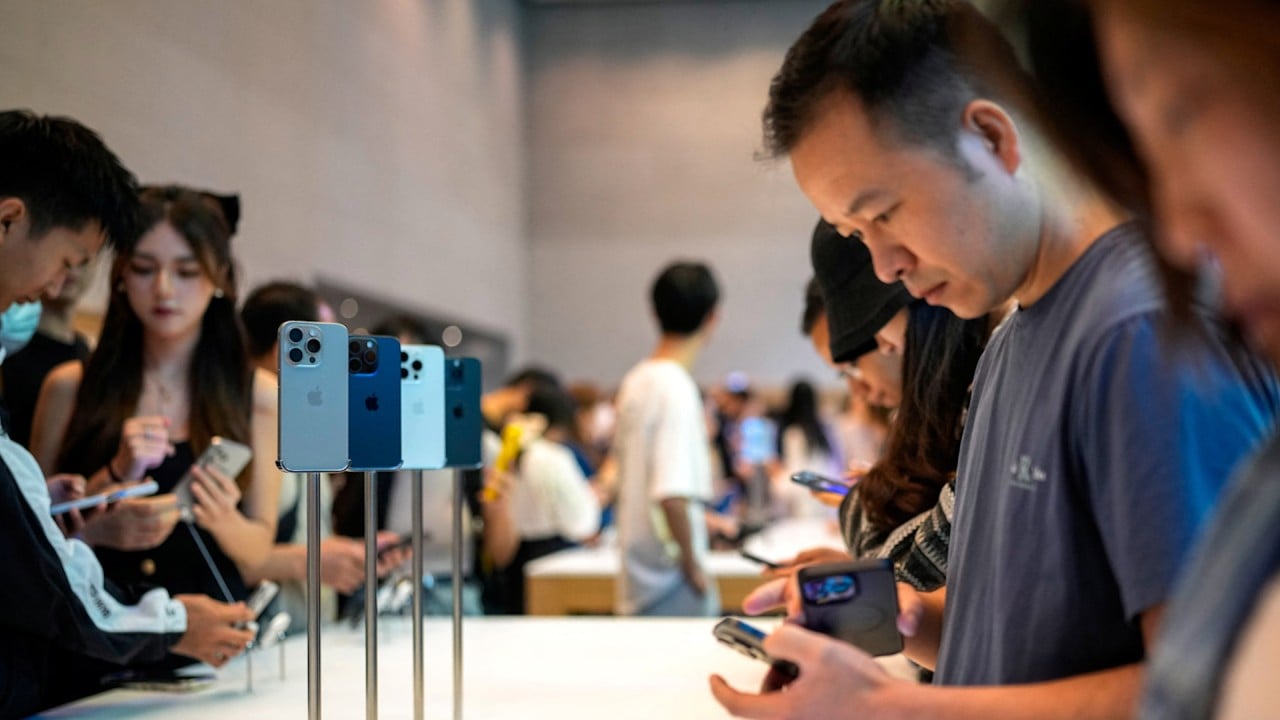Since its debut more than 17 years ago, Apple’s iPhone has been more than a smartphone in the eyes of Chinese consumers – it has been a status symbol. This was especially true for China’s younger generation, who grew up with US cultural influences from drinking Coca-Cola to watching Hollywood films as Beijing opened its economy to foreign investment in the early 1980s.
Recently, however, the iPhone has seen a decline in appeal, and Apple, the world’s leading consumer technology company, is losing its allure in China.
Apple has seen a significant erosion of its market share. For the first time ever, in the second quarter of this year, the top five bestselling smartphones in China were all domestic brands, according to Canalys. The top five were Vivo, followed by Oppo, Honor (Huawei’s premium sister brand), Huawei and Xiaomi. Apple dropped to No 6, holding just 14 per cent of the market.
So what changed? Geopolitics, and especially US-China tensions, have negatively affected Apple’s business in China. Beijing has stepped up its propaganda in recent years to endorse domestic brands. It now also reportedly requires that government officials and state-owned enterprise staff not use iPhones or other foreign brands, thought to be for national security reasons.
Apple may have to bear some responsibility for the situation. China’s phonemakers, such as Huawei Technologies and Xiaomi, have invested heavily in partnerships, including integrating Leica camera lenses and photographic technology to enhance image quality – catering to Chinese consumers who place a high importance on photo-taking.
Industry analysts have expressed concerns about the iPhone’s lack of innovation in recent years, especially as the price of an entry-level iPhone now rivals that of some laptops. Chinese-branded phones typically sell for one-third to half the price of an iPhone, putting Apple in a tough position amid languishing consumer sentiment.
A similar pricing battle is unfolding in the electric vehicle (EV) market, where BYD and other domestic EV manufacturers are aggressively cutting prices to compete with foreign brands like Tesla. China is the world’s largest automobile market by unit sales.
Chinese consumers are becoming more discerning and pragmatic; they no longer view foreign tech brands such as Apple as inherently “high-end”. Meanwhile, Chinese brands have made significant strides in quality and innovation over the past decade.
Even US tech leaders acknowledge this trend in innovation. Meta founder and CEO Mark Zuckerberg once said that he should have learned from WeChat, often called the “super app of China”, which excels in messaging, social media, payments and dozens of other online services.
Demand destruction may not last forever, but for Apple and other foreign brands hoping to maintain Chinese consumer loyalty, understanding and embracing localisation is crucial. Chinese consumers now seek products that are tailored to their daily needs. For smartphones, they prioritise features such as superior image quality and seamless integration with essential Chinese apps for local payments, e-commerce and public transport.
Apple’s lack of localisation may be related to its centralised corporate culture. Key decisions from design to marketing are all made at its headquarters in Cupertino, California. China for Apple is all about assembling.

While Apple keeps losing its market share in China, Chinese smartphone brands are grabbing more consumers globally. Samsung and Apple are still the world’s two leading smartphone brands by shipments, but Xiaomi has been catching up rapidly, narrowing the gap in market share. By the end of the second quarter this year, Xiaomi had 14.8 per cent of the global market against Apple’s 15.8 per cent, a difference of just a percentage point, according to the International Data Corporation.
Apple is set to unveil its iPhone 16 series next month, which will introduce a generation of iPhones powered by Apple’s artificial intelligence (AI) product, known as Apple Intelligence. This presents a fresh opportunity for Apple to regain the favour of Chinese consumers. But it could also pose a new risk for Apple. If the company fails to show that its AI can perform effectively in China – a market known for its strict internet regulations – Apple may face a further loss of its smartphone market share in China.
Huawei already has its own AI system, while other Chinese brands may team up with China’s big AI developers such as Baidu, Alibaba Group Holding (owner of the South China Morning Post) and Tencent to develop AI capabilities on their smartphones.
The road ahead for Apple in China appears challenging. The company must intensify its focus on localisation amid increasingly complex geopolitical tensions.
George Chen is managing director and co-chair of digital practice at The Asia Group, a business and policy consulting firm



